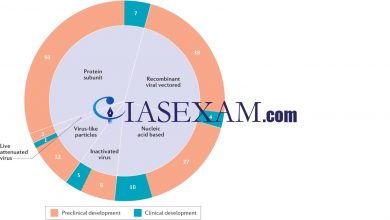Daily News Analysis
World Bank boost to Namami Gange Project

India and the World Bank Tuesday signed a loan agreement worth $400 million to enhance support for the Namami Gange programme, which seeks to rejuvenate the Ganga. The project is aimed at stemming river pollution and strengthening management of the river basin, which is home to more than 50 crore people.
The $400 million funding support comprises a loan of $381 million and a proposed guarantee of up to $19 million, the Finance Ministry said in a statement on Tuesday. The $381 million loan has a maturity of 18.5 years, including a grace period of five years.
Key Highlights
- The World Bank is supporting the National Ganga River Basin Project, which helped set up the National Mission for Clean Ganga as the nodal agency to manage the river, and finance sewage treatment infrastructure in several riverside towns and cities.
- “The first World Bank project helped build critical sewage infrastructure in 20 pollution hotspots along the river, and this project will help scale this up to the tributaries. It will also help government strengthen the institutions needed to manage a river basin as large and complex as the Ganga Basin,” said Junaid Ahmad, World Bank Country Director in India.
- The sprawling Ganga Basin provides over one-third of India’s surface water, includes the country’s largest irrigated area, and is key to India’s water and food security. Over 40 percent of India’s GDP is generated in the densely populated Basin. But the Ganga River is today is facing pressures from human and economic activity that impact its water quality and flows.
- Over 80 per cent of the pollution load in the Ganga comes from untreated domestic wastewater from towns and cities along the river and its tributaries. The SNGRBP will finance sewage networks and treatment plants in select urban areas to help control pollution discharges.
- These infrastructure investments and the jobs they will generate will also help India’s economic recovery from the COVID-19 (Coronavirus) crisis.
- To ensure that these infrastructure assets function effectively and are well maintained, the Project will build on the innovative Hybrid Annuity Model (HAM) of public private partnership introduced under the ongoing NGRBP, and which has become the solution of choice for sewage treatment investments in the Ganga Basin.
- Under this model, the government pays a private operator 40 percent of the capital cost to build a sewage treatment plant during the construction period; the remaining 60 percent is paid as performance-linked payments over 15 years to ensure that the operator runs and maintains the plant efficiently.
SOURCE: The New Indian Express





.png)



